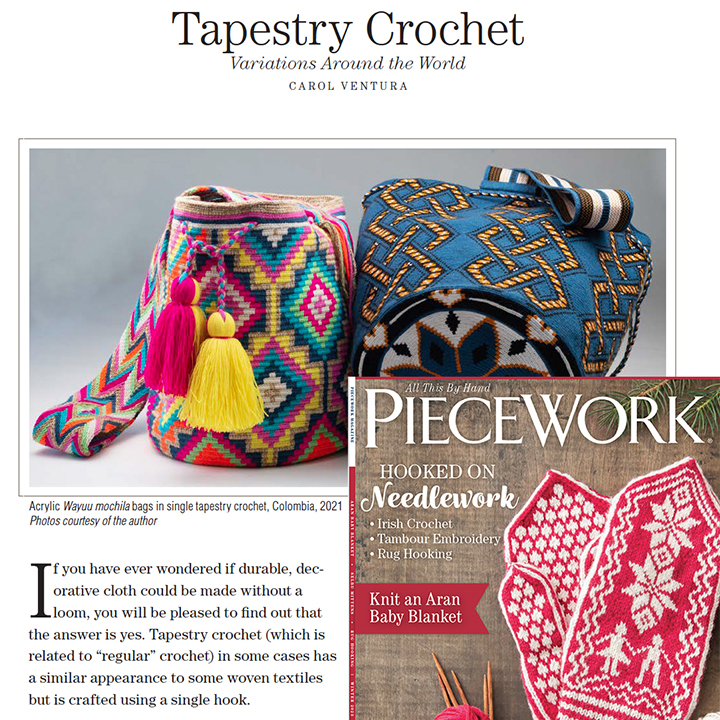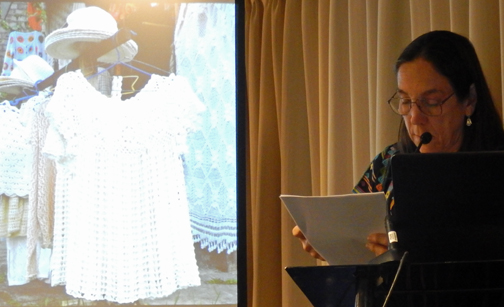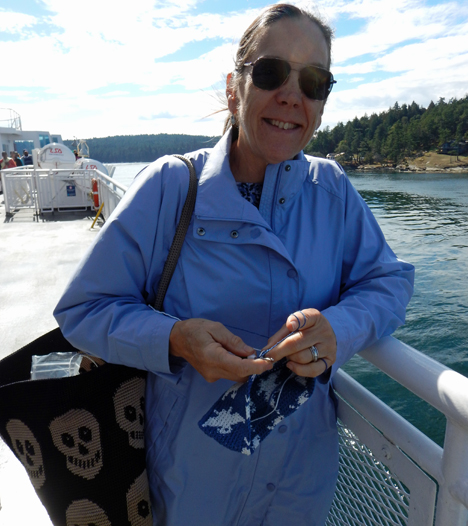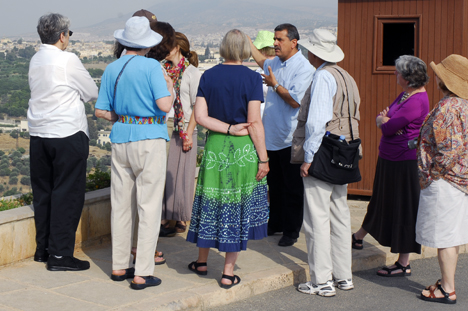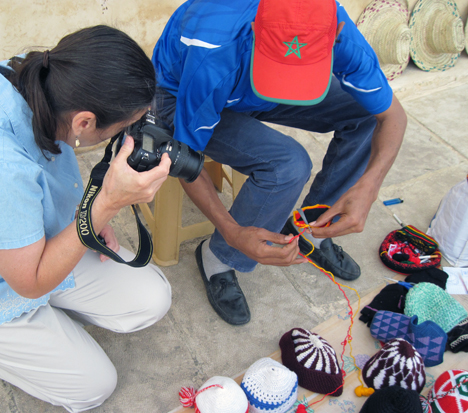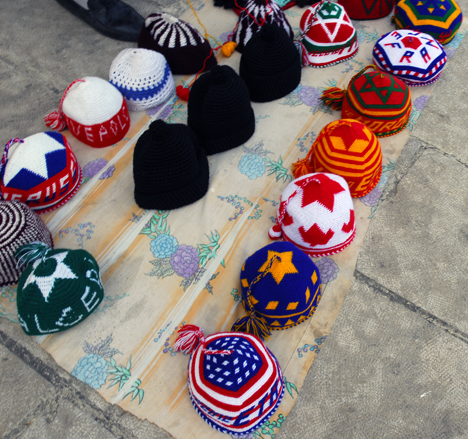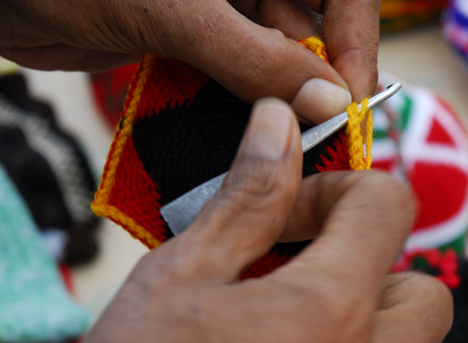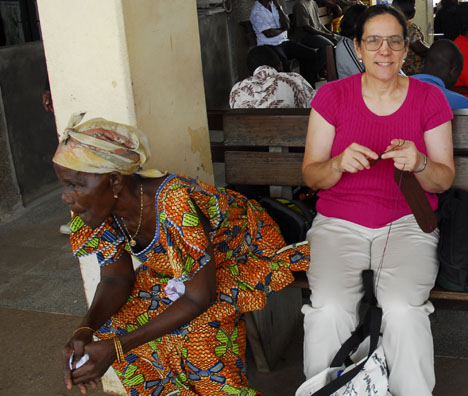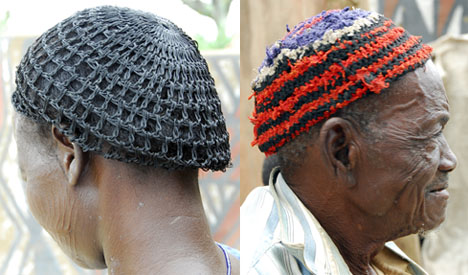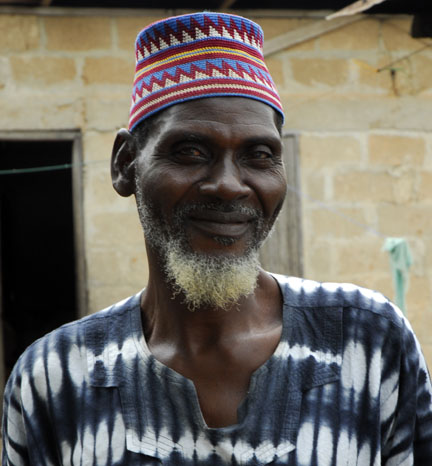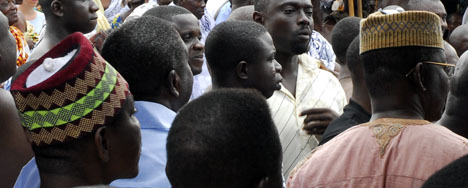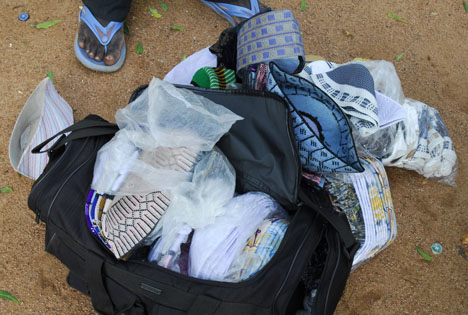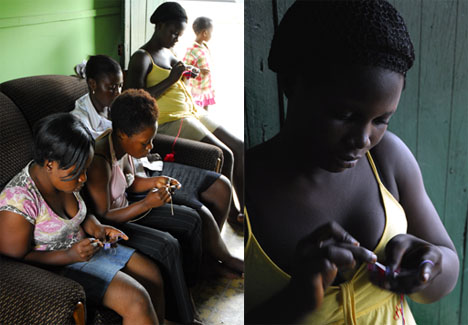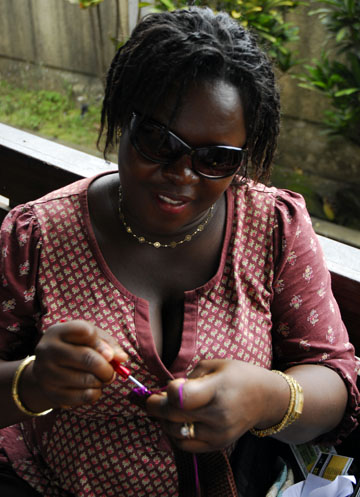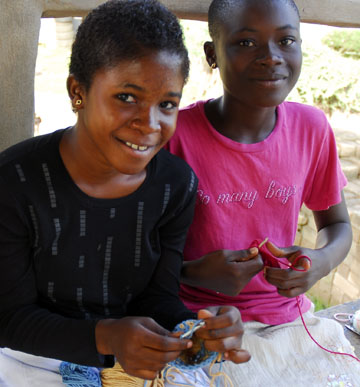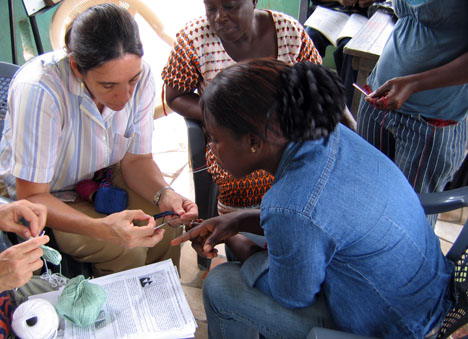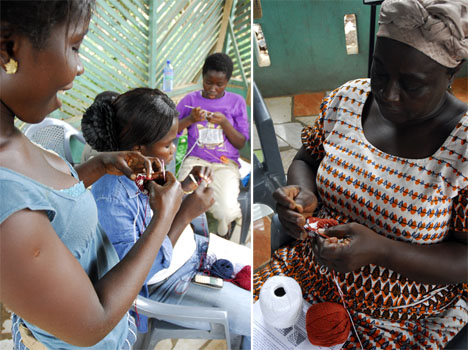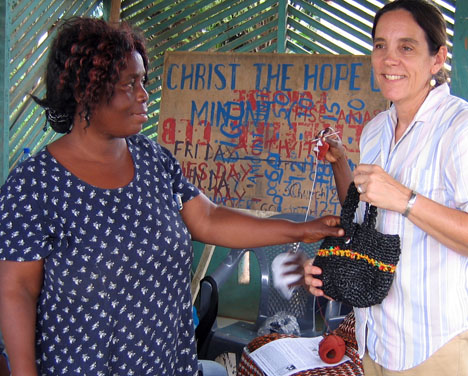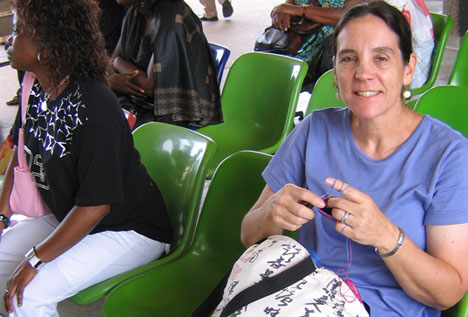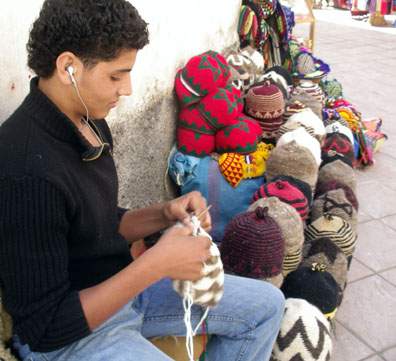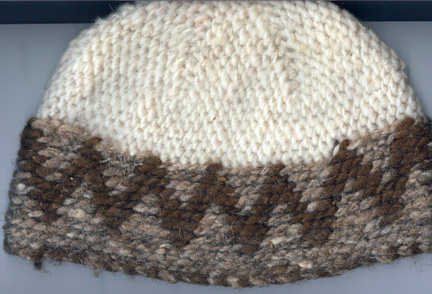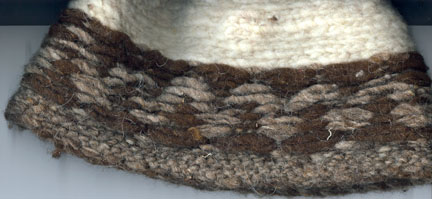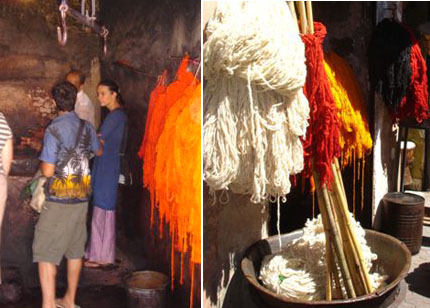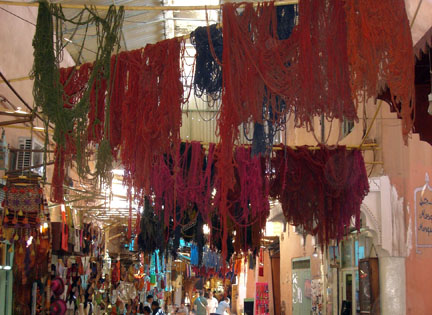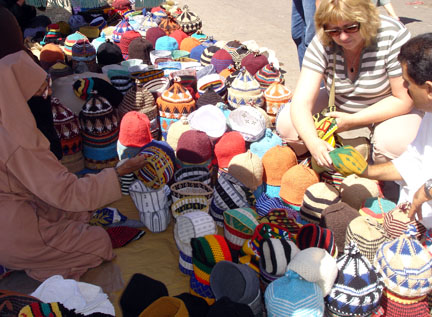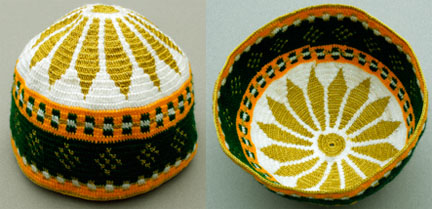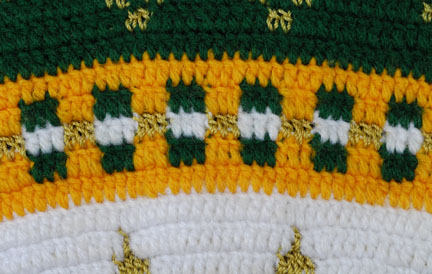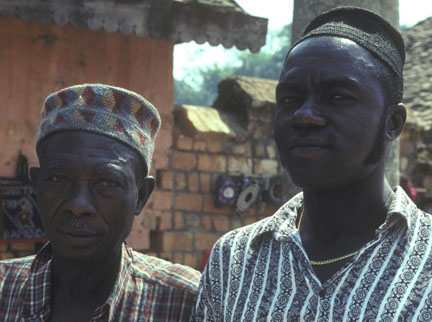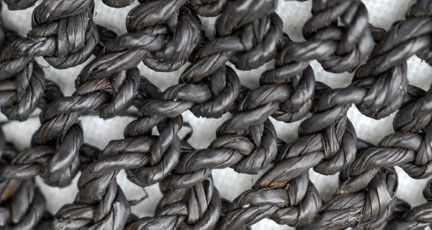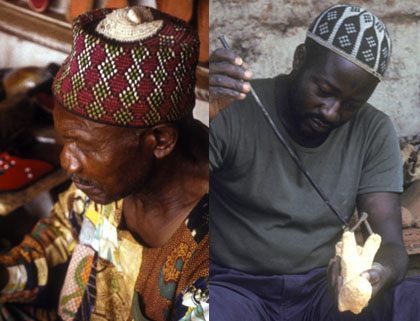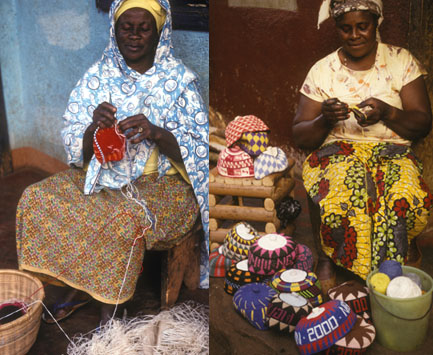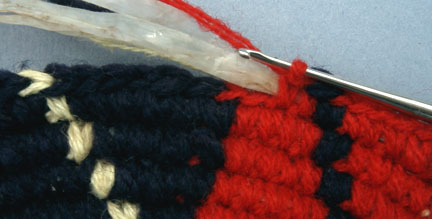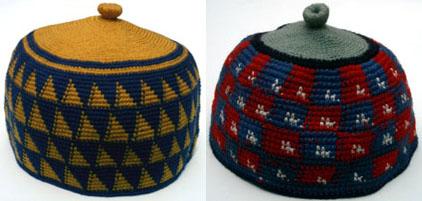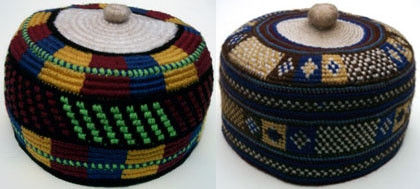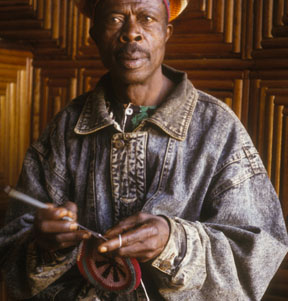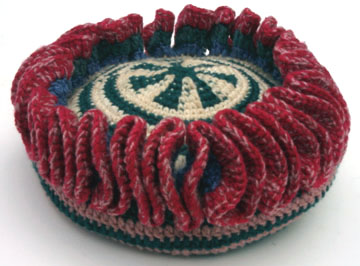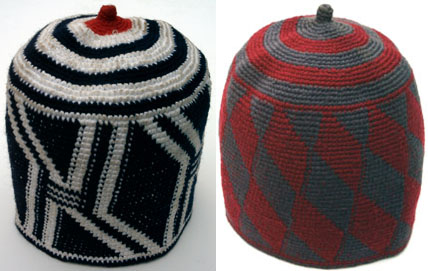Othman Ribatallah has really grown up since
Bronwyn met him in 2006. Maybe that’s why he and his Father were able to change places. Othman now runs the family store, stocked with a variety of high quality items, some of which Othman crafted himself. The inventory includes fine handwoven rugs, sterling silver jewelry, crocheted hats from all over Morocco and sculptures from other African countries, like Cameroon.
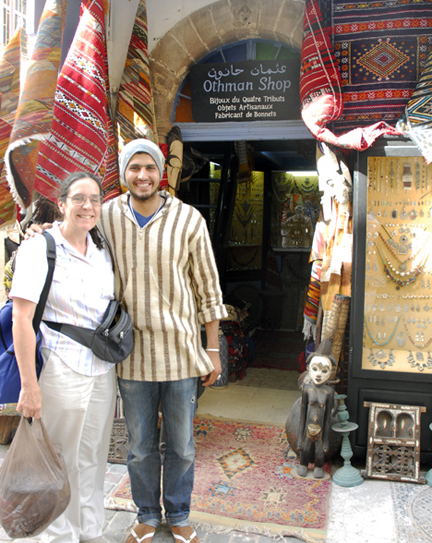
Othman and me (with my hat purchases) in front of his store in Essaouira.
Othman’s father now crochets and sells hats around the corner from the store. He learned to crochet from his father, who learned from his father, etc. Slip stitched hats were traditionally made by Berber shepherds as they tended their flocks of goats and sheep (today both men and women crochet hats in Morocco). His wife and daughter crochet the style of hat he’s holding (below) with a small hook and fine cotton thread. It takes them two to three days to slip stitch one with such small stitches. He prefers to crochet hats with a larger hook and heavier cotton yarn, which take two to three hours to finish. Prices reflect time spent to make each hat.
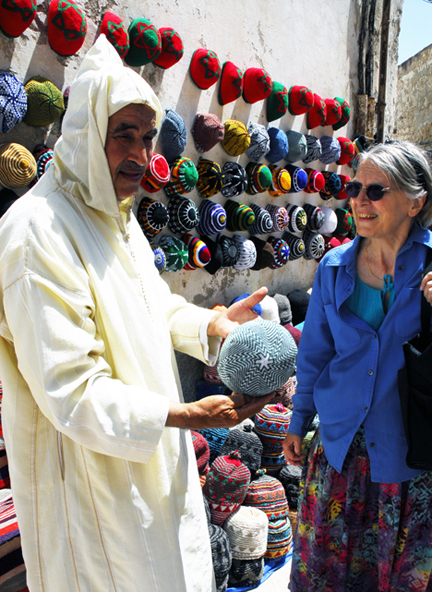
Othman’s Father and our tour leader, Susan Schaefer Davis, in Essaouira.
Our tour didn’t include Essaouira, so I asked if an extension could be added so we could look for tapestry crocheters there. Not only did Noble Journeys add the extension, but Susan found Othman on an earlier visit. When Othman mentioned to Susan that he taught crochet, she scheduled an informal private lesson for me!
But first things first! A proper Moroccan host must serve hot, frothy green tea made with fresh mint to welcome his guests! So after we arrived, Othman asked us to give him some time so that he could prepare everything. In the meantime, we visited the interesting nearby Fort.
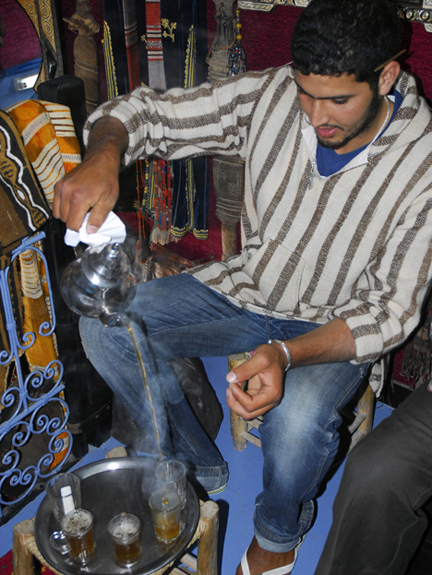
Othman served us hot tea in the traditional way – pouring it from above.
Othman began the lesson by showing me how to crochet a hat with alternating rows of blue and white back loop slip stitches. The rim will have several rounds of front loop stitches for textural contrast. Othman often combines front loop (which he calls bottom loop) with back loop (top loop) stitches. (This slip stitch technique goes by many names, including Bosnian crochet.) A friend brought him the fine Italian wool that he’s using to make the hat.
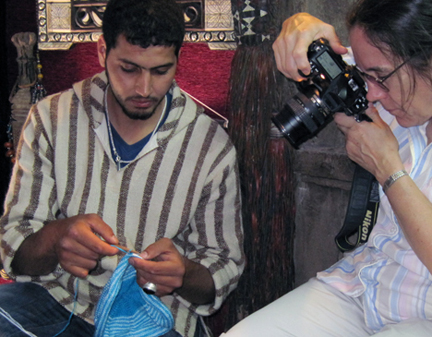
Othman slip stitched a hat with alternating rounds of blue and white wool while I photographed his technique.
Othman then began another style hat with chunky cotton yarn. Like the Fes crocheter that I met earlier on the trip, he held the piece with his left hand, inserted the hook with his right hand, yarned over the hook with his right hand (like a knitter), then immediately pulled the new loop through both loops already on the hook. Colors were changed after the stitch was complete. His wooden hook was begun by a local carpenter, then Othman carved the large and small hook on both ends himself.
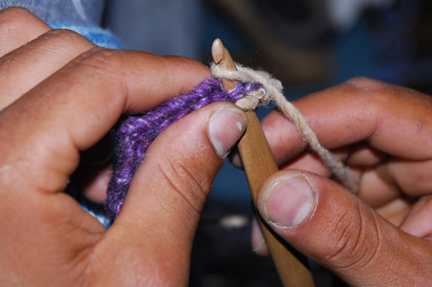
The yarn over is made by wrapping the yarn across the front of the hook, then around the back.
Othman crochets traditional hats and new styles of his own design. After showing me how to crochet three different types, he explained that someone with an open mind and imagination could crochet anything.
Othman is an EXCELLENT teacher and would gladly teach slip stitch tapestry crochet to you in Morocco or abroad. His English, French, and Moroccan Arabic are excellent, he patiently explains every step of the process – then helps you do it, and his fees are very reasonable.
Othman would also be happy to sell you his work, hats made in other parts of Morocco, and merchandise from his store. He is also willing to crochet hats with wool or thread that you send him. Packing is time consuming and postage is expensive, so several items would need to be purchased together to make the order worthwhile. Payment would have to be made in advance through Western Union. For purchases or to schedule a lesson, please email Othman at othmanshopp@gmail.com or phone him at 212 610 745 701 or write to him at Boutique N. 22, Rue Skala, Essaouira, Morocco.
I hope you’ll be able to visit Morocco someday! It’s such a beautiful and interesting country full of friendly, talented people. Although we flew into Cassablanca, some take the ferry from Algeciras in southern Spain (near Gibraltar) to Ceuta to enter the country. No matter how you get there, please say hello to Othman and his Father for me!
